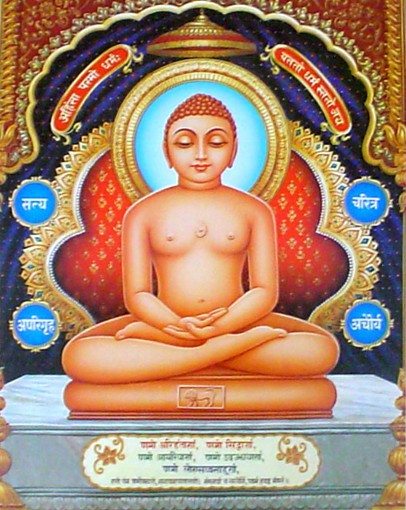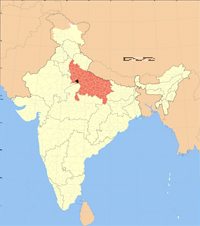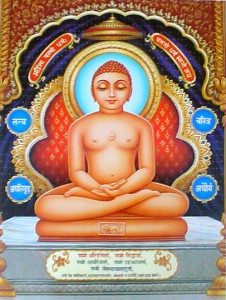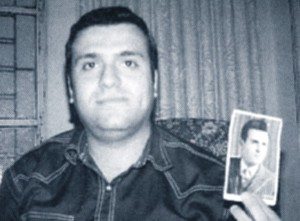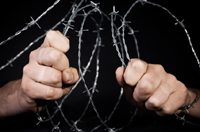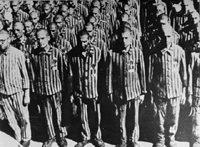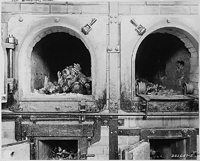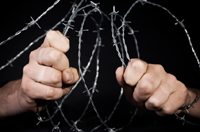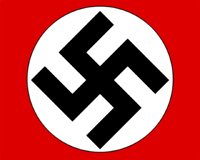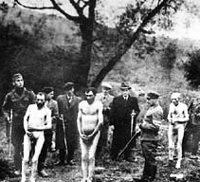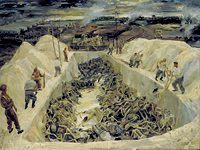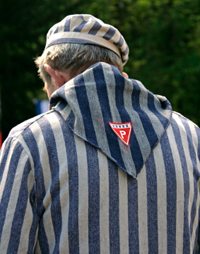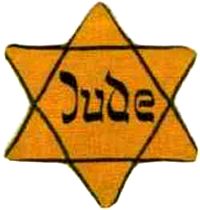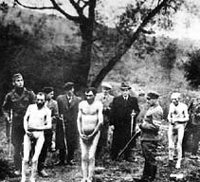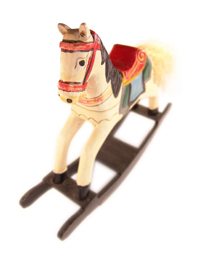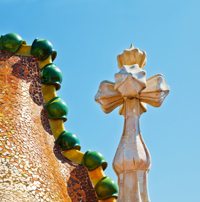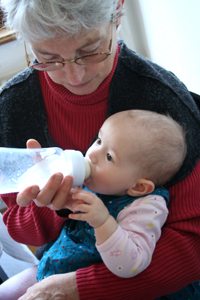How Derived: Memories in Childhood
Researched by: Ian Stevenson, MD
From: Twenty Cases Suggestive of Reincarnation, by Ian Stevenson, MD
Article by Walter Semkiw MD, from Born Again
 This is a very unusual case in that it involves bringing to life an apparently dead body, that belonging to Jasbir Jat, and the assumption of that body by a different soul, whose name in a prior incarnation was Sobha Ram.
This is a very unusual case in that it involves bringing to life an apparently dead body, that belonging to Jasbir Jat, and the assumption of that body by a different soul, whose name in a prior incarnation was Sobha Ram.
As such, this is a reincarnation case where a soul “walks-in” to take over a body that had previously been inhabited by a different soul. In past life regression therapy literature, “walk-ins” are reported, though generally these cases do not involve the death of an individual. Instead, in regression literature, it is described that a soul inhabiting a body volunteers to leave that body so that another soul can incarnate by using that same body.
The concept of walk-ins has been a controversial one, as there can be debate whether walk-ins truly occur or whether the phenomenon represents a psychiatric disorder, such as multiple personality syndrome.
The case of Sobha Ram | Jasbir Jat provides strong evidence that walk-ins are a valid phenomenon. Ian Stevenson, MD researched this case in great detail and published it in his seminal book, Twenty Cases Suggestive of Reincarnation. Ian Stevenson chose to use a different term, “exchange incarnations,” to describe this type of case, where one soul gives up a body so that another soul can take it over.
The Life of Sobha Ram
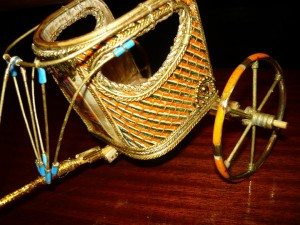 Sobha Ram lived in the farming village of Vehedi in the far northeast section of India, which borders Nepal. Vehedi at the time had a population of 2000 people and was eight miles north of the city of Muzaffarnagar, which has over 3 million inhabitants.
Sobha Ram lived in the farming village of Vehedi in the far northeast section of India, which borders Nepal. Vehedi at the time had a population of 2000 people and was eight miles north of the city of Muzaffarnagar, which has over 3 million inhabitants.
Sobha’s father was Shankar Lal Tyagi. Sobha was married and had a son named Baleshwar. The family was Brahmin and they observed the customs of this caste, including eating food only prepared by other Brahmins, cooking only with metal vessels, not earthenware, and wearing a sacred thread around the neck.
The family owned fields in the village, which were partitioned from fields belonging to other villagers. Sobha owned a ceremonial chariot, which was used for weddings. In May 1954, he drove his chariot to the town of Nirmana, where the family had relatives, to pick up the bride for a wedding ceremony that was taking place in Muzaffarnagar.
On the route from Nirmana to Muzaffarnagar, Sobha fell from the chariot and suffered a head injury. He was well enough to continue to the scene of the wedding and afterwards he was able to make it back with to his village. A few hours after Sobha returned to Vehedi, he died. Birth and death records were not maintained in the village, but based on the date of the marriage ceremony, Dr. Stevenson was able to establish the date of death as May 22nd or 23rd in 1954.
The Life and Apparent Death of Jasbir Jat
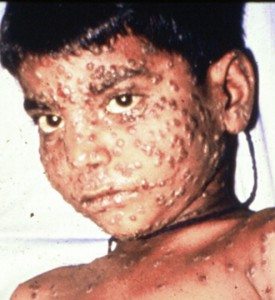 Jasbir Jat, son of Girdhari Lal Jat, was born in 1950. The family lived in the village of Rasulpur, which at the time had a population of 1500 people and was located about 8 miles southwest of Muzaffarnagar. The family belonged to the Jat ethnic group and they were Hindu, though of a lesser caste than Brahmins.
Jasbir Jat, son of Girdhari Lal Jat, was born in 1950. The family lived in the village of Rasulpur, which at the time had a population of 1500 people and was located about 8 miles southwest of Muzaffarnagar. The family belonged to the Jat ethnic group and they were Hindu, though of a lesser caste than Brahmins.
In the spring of 1954, when Jasbir was 3 1/2 years old, he was thought to have contracted smallpox and it appeared that he had died. As Jasbir’s body appeared to be lifeless, his father, Girdhari, enlisted the help of his brother and other villagers to help bury his “dead” son. (1)
When Ian Stevenson researched this case, he asked Jaspir’s family how the villagers of Rasulpur determined that death occurred. Stevenson was told that they relied on the cessation of breathing, the cooling of the body and the inability to open the jaw of the deceased, which would indicate rigor mortis. As such, it appears that the determination that Jasbir was dead should have been accurate.
Raising of Jasbir’s Dead Body
Since it was already late in the evening, it was decided to postpone burial until the morning. A few hours later, Girdhari noticed stirring of the body and Jasbir gradually revived. It took several days before Jasbir could speak and several weeks before he could communicate effectively.
The family did not record the exact date of Jasbir’s apparent death and revival. Based on available information, Ian Stevenson estimated that this event occurred in April or May 1954.
Reincarnation Walk-In: Sobha Ram Emerges in the Body of Jasbir Jat
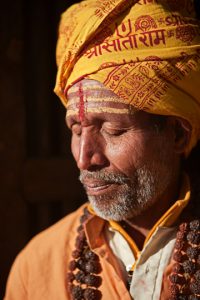
When Jasbir was finally able to converse, he demonstrated a dramatic change in personality and behavior. He said that he was the son of Shankar of the village of Vehedi and he wanted to go to that village. Further, he made these statements in the present tense, such as “I am the son of Shanker of Vehedi.” (2)
He eventually told his father, Girdhari, that his name was Sobha Ram. Jasbir said that he had a wife and that she was from the town of Molna, which was true for the wife of Sobha Ram. Though he was less than 4 years old, Jasbir suddenly referred to himself as an adult and he talked of having children, in addition to a wife.
Prior to his transformation, Jasbir acted like a normal child and enjoyed playing with toys. Afterwards, he did not like to play with toys or other children.
Jaspir told his family that he was a Brahmin, not a Jat, and he took on the habits of someone from the Brahmin caste. He demanded that only another individual who was of the Brahmin caste cook his meals. He would not eat food cooked in earthenware, but only food cooked in metal pots and pans. He began wearing a sacred thread around his neck, typical of a Brahmin.
Past Life Memories: Jasbir States He Fell from a Chariot & Died
 Jasbir stated that he had died when he fell off a chariot when returning from a wedding and that he hit his head against the ground. Further, Jasbir said that the reason that he fell from the chariot was that a man who had owed him money gave him poisoned sweets. The poison made him dizzy, which led to his fall. Jasbir stated that he clearly remembered falling off the chariot and that the exact place of his injury was called Dabal Pathak, which was on the road from Nirmana back to his home.
Jasbir stated that he had died when he fell off a chariot when returning from a wedding and that he hit his head against the ground. Further, Jasbir said that the reason that he fell from the chariot was that a man who had owed him money gave him poisoned sweets. The poison made him dizzy, which led to his fall. Jasbir stated that he clearly remembered falling off the chariot and that the exact place of his injury was called Dabal Pathak, which was on the road from Nirmana back to his home.
Jasbir gave a description of the town and property that he had previously lived in. He said that there was a culvert in his town, which was significant, as a culvert did not exist in Rasulpur. He stated that on his property, there was a well for water, which was partially inside the house and partially outside of the house, which Ian Stevenson noted was very unusual for a well in India. Jasbir stated that outside their property, there grew a peepal tree, as well as a tamarind tree. All these statements were true for Vehedi and the property where Sobha Ram lived.
Jasbir’s vocabulary changed after his transformation, in that he began using Brahmin words instead of words typically used by Jats. As an example, for the term house he would use the Brahmin term “haveli,” rather than the Jat word “hilli;” for the word clothes he would use the term “kapra” instead of “latta.” (3)
Fortunately, the family found a Brahmin woman who would cook for Jasbir. This continued for the next year and a half, until Jasbir acquiesced to his family’s pressure to eat food prepared by them. Jasbir’s father tried to keep his son’s unusual behavior quiet, but Jasbir’s requirement to eat like a Brahmin leaked out to the Brahmin community in Rasulpur.
Past Life Memories: Jasbir Recognizes his Aunt from his Lifetime as Sobha Ram
About three years after Jasbir’s death and the emergence as Sobha Ram, a woman visiting from Vehedi, the home town of Sobha Ram, heard about Jasbir’s sudden Brahmin behavior. She was Srimati Shyamo, a Brahmin originally from Rasulpur who had married a man, Ravi Dutt Sukla, who lived in Vehedi. Srimati was visiting her family in Rasulpur, where the Jat family lived, and was told about Jasbir, who now claimed to be from Vehedi.
When Srimati went to meet this unusual boy, Jasbir immediately recognized her as his “aunt.” In fact, Srimati had married a relative of Shankar Lal Tyagi, the father of Sobha Ram, so familial relationship did exist between Sobha and Srimati.
Whe Srimati returned to Vehedi, she informed her husband and the Tyagi family of this boy who claimed to be Sobha Ram, who stated that he died as a result of a chariot accident.
Past Life Memories: Jasbir Identifies Relatives of Sobha Ram on their Visits to Rasulpur and Reveals the Location of a Small Hidden Treasure
Members of the Tyagi family then traveled to Rasulpur to meet Jasbir. When Jasbir saw Shankar Lal Tyagi approaching, he stated, “My father has come. He is from Vehedi.” (5) Jasbir then ran into the house and requested that a Brahmin meal be prepared for his father.
 Recall that Shankar was indeed the father of Sobha. Jasbir related to Shankar the story of dying after he fell from a chariot when returning from a wedding. He added that on this trip, when he went into a house to borrow a cot for the wedding party, a dog bit him. Shankar, Sobha’s father, confirmed that this was true; Sobha was indeed bitten by a dog on the wedding trip, as described by Jasbir.
Recall that Shankar was indeed the father of Sobha. Jasbir related to Shankar the story of dying after he fell from a chariot when returning from a wedding. He added that on this trip, when he went into a house to borrow a cot for the wedding party, a dog bit him. Shankar, Sobha’s father, confirmed that this was true; Sobha was indeed bitten by a dog on the wedding trip, as described by Jasbir.
When he saw Ravi Dutt Sukla, the husband of Srimati Shyamo, Jasbir correctly identified Ravi’s relationship to Sobha. When Santoshi Tyagi approached, Jasbir identified him as his uncle, which was the correct relationship between Santoshi and Sobha.
When Sobha’s Uncle Pritvi came unannounced to Rasulpur and Jasbir saw him, Jasbir spontaneously ran up to him and called him “Mama,” which was correct, as this is an Indian term for maternal uncle. (6)
Jasbir then revealed that he (as Sobha) had borrowed from Uncle Pritvi a sum of money and he wanted that money to be returned to him. Jasbir disclosed the location where he had hid the money on the Tyagi property. Later on, the Tyagi family found the money exactly where Jasbir said it would be located.
In the presence of the Tyagi family, Jasbir continued by accurately reciting names of family members from his lifetime of Sobha. Jasbir stated that his mother’s name was Sona, he had a sister named Kela, his wife was called Sumantra, he had a son named Baleshwar, an aunt named Ram Kali and that his mother-in-law was Kirpi. All these statements were correct for the life of Sobha Ram.
Geographic Past Life Memories: Jasbir’s Finds his Past Life Home in Vehedi
A few weeks after the Tyagi family met Jasbir in Rasulpur, he was brought to Vehedi. Jasbir had never been to Vehedi before. At the railway station, he was asked to lead the way to the Tyagi home. Without hesitation, Jasbir walked from the railroad station directly to the Tyagi property, which was about 200 yards away from the station.
Later he was taken to the home of Ravi Dutt Sukla in Vehedi and from there, Jasbir led the way to the Tyagi home by a different route.
When shown the agricultural fields in Vehedi, Jasbir was able to correctly identify which fields belonged to the Tyagi family.
Past Life Memories: Jasbir Recognizes & Identifies Sobha’s Relatives in Vehedi
In Vehedi, Jasbir correctly recognized Surajamal and Mahendra Singh Tyagi as Sobha’s younger brothers, and Swaroop Tyagi as Sobha’s brother-in-law. He recognized Birbal Singh as the younger cousin of Sobha and when Birbal walked into the room, Jasbir ran up to him and said, “Come in, Ganghiji.” (7) Ganghiji was Birbal’s pet name, as he had large ears that made him look like Mahatma Gandhi.
When Jasbir was asked to identify another individual, Jasbir said, “This is my grandfather Rai Sahib,” who was indeed Sobha’s grandfather.
Jasbir spent several days in Vehedi and demonstrated detailed knowledge of the Tyagi family and its affairs. He very much enjoyed himself and was reluctant to go home. He would return to visit periodically, usually for several weeks at a time, and he said he wanted to live there. Jasbir felt isolated and lonely in Rasulpur, whereas in Vehedi, he felt at home.
Jasbir developed a very strong attachment to the Tyagi family and in particular to Baleshwar, Sobha’s son. In his visits to Vehedi, Jasbir would sleep with Baleshwar in the same cot, which Ian Stevenson noted was appropriate for a father and son to do, but was inappropriate for strangers. In this act, Jaspir was behaving as Baleshwar’s father.
At times, Jasbir threatened to run away from home so that he could live in Vehedi. Jasbir’s family was so concerned about his attachment to his past life family that they would not allow him to meet Sobha’s wife, Sumantra, who after his death moved back to her home village of Molna.
As time went on, the Tyagi family accepted that Sobha had come back to life through Jasbir and they regarded Jasbir as a full member of their family. When Baleshwar was considering marriage, Jasbir, though a child, was consulted like a father normally would be. Jasbir later attended Baleshwar’s wedding ceremony.
Past Life Karma Repaid: The Man who Poisoned Sobha makes Restitution
 Jasbir insisted that the reason that he fell from the chariot was because a man who owed him money gave him poisoned sweets. Jasbir remembered specifically who this man was, though the name was not given in Ian Stevenson’s report of this case. Jasbir stated that this man owed him, as Sobha, 600 rupees, and that the man poisoned him with the intention to kill him so that the debt would not have to be repaid. Sobha’s family did not know anything about the poisoned sweets before Jasbir revealed this information. Jasbir eventually found this man who allegedly gave Sobha the poison. In an apparent act of restitution, this man gave Jasbir 600 rupees.
Jasbir insisted that the reason that he fell from the chariot was because a man who owed him money gave him poisoned sweets. Jasbir remembered specifically who this man was, though the name was not given in Ian Stevenson’s report of this case. Jasbir stated that this man owed him, as Sobha, 600 rupees, and that the man poisoned him with the intention to kill him so that the debt would not have to be repaid. Sobha’s family did not know anything about the poisoned sweets before Jasbir revealed this information. Jasbir eventually found this man who allegedly gave Sobha the poison. In an apparent act of restitution, this man gave Jasbir 600 rupees.
Ian Stevenson, MD excludes Fraud in this Reincarnation Case
Dr. Stevenson noted that though the villages of Rasulpur and Vehedi are only 20 miles apart as the crow flies, they were very isolated at the time due to the condition of the roads and transportation systems. Further, the two families were of different ethnic groups and castes. Given these factors, Stevenson could not see any way that Jasbir, at less than 4 years of age, could know of the life of Sobha Ram by any normal means.
Further, members of both families testified that they had no knowledge of each other prior to Jasbir’s death and transformation.
Stevenson noted that additional facts that would argue against fraud included Jasbir’s family’s unhappiness about his sudden Brahmin behavior. Further, the family initially disbelieved his statements regarding another life. They scolded him and tried to suppress information about his transformation to fellow villagers. As noted, they were also afraid that Jaspir would leave them for his past life family.
Spirit Being: A Holy Man Facilitates Sobha’s Reemergence in Jasbir’s Body
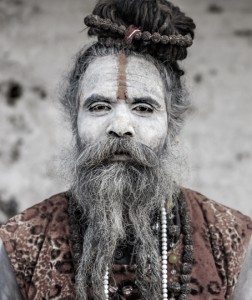 In 1961, Ian Stevenson asked Jasbir what happened between the death of Sobha Ram in Vehedi and his reemergence in Rasulpur, through the revived body of Jasbir. Jasbir stated that after his death as Sobha, he met a sadhu or holy man, apparently in the spirit world. This holy man told him to “take cover” in the body of Jasbir, son of Girdhari Lal Jat. (8)
In 1961, Ian Stevenson asked Jasbir what happened between the death of Sobha Ram in Vehedi and his reemergence in Rasulpur, through the revived body of Jasbir. Jasbir stated that after his death as Sobha, he met a sadhu or holy man, apparently in the spirit world. This holy man told him to “take cover” in the body of Jasbir, son of Girdhari Lal Jat. (8)
When Stevenson asked Jasbir what had happened to the original personality that inhabited Jasbir’s body prior to Sobha taking it over, Jasbir said that he didn’t know. Stevenson speculated that this prior personality may have reincarnated somewhere nearby. He made inquiries in the area regarding any children that may remember a past lifetime in which they died of smallpox between the ages of 3 and 4, but he found no such case.
Jasbir related to Dr. Stevenson that he continued to have dreams in which he still saw and interacted with this same discarnate holy man, who would make accurate predictions regarding the future. As an example, Jasbir’s father had taken the initiative to set up an arranged marriage for Jasbir, which neither the future bride or Jasbir were interested in. Jasbir said that in a dream, the holy man appeared and reassured him not to worry, as the marriage plans would fall through. Indeed, this came to pass.
In reflecting on why he, Sobha, a Brahmin, had reemerged in the body of Jasbir, who belonged to a Jat family of lower caste, who were considerably less well-off than the Tyagi family, Jasbir replied that he saw this as a type of a demotion. He knew of no incident, though, in the life of Sobha, that would warrant such a punishment.
Walk-in or Exchange Incarnation: Rather than a classic reincarnation case, where one soul is shown to incarnate into two bodies sequentially, this case involves a walk-in. Walk-ins or exchange incarnation cases involve two different souls who inhabit the same body in sequential order. The original soul inhabiting the body leaves the body to allow another soul to take over and make use of that body. Walk-in cases are considered to be extremely rare.
As Jasbir only lived for 3 1/2 years prior to his apparent death from smallpox, his original personality did not have a chance to develop. Whether the soul that inhabited the body of Jasbir prior to his apparent death had any type of relationship with the soul of Sobha is unknown.
 Reanimation or Raising of a Dead Body: Though a physician did not examine Jasbir after he apparently succumbed to smallpox, his body was lifeless to the extent that his father and fellow villagers were prepared to bury Jasbir. As noted above, the criteria they used to determine death were sound ones, including cessation of breathing, the cooling of the body and the inability of an examiner to open the jaw of the deceased. As such, it appears that the determination that Jasbir was dead should have been accurate.
Reanimation or Raising of a Dead Body: Though a physician did not examine Jasbir after he apparently succumbed to smallpox, his body was lifeless to the extent that his father and fellow villagers were prepared to bury Jasbir. As noted above, the criteria they used to determine death were sound ones, including cessation of breathing, the cooling of the body and the inability of an examiner to open the jaw of the deceased. As such, it appears that the determination that Jasbir was dead should have been accurate.
How Jasbir’s revival occurred is unknown, though Jasbir, after his transformation, stated that a discarnate sadhu or holy man met him following his death as Sobha and encouraged to take possession of Jasbir’s body.
This turn of events begs the question of whether this holy man played a part in reanimating Jasbir’s lifeless body. If so, this feat parallels miracles attributed to Jesus who, according to the New Testament, brought Lazarus back to life and brought himself back to life through the Resurrection.
As the date of Jasbir’s apparent death was not recorded, it is not clear whether any time elapsed between the time of Sobha’s death, which was determined to have occurred on May 22nd or 23rd, 1954, and his reemergence through the body of Jasbir. Ian Stevenson estimated that Jasbir’s death from smallpox occurred in April or May 1954. As such, it is possible that Sobha’s death occurred at about the same time as Jasbir’s death, though an exact correlation regarding timing cannot be made.
Geographic Past Life Memory: Jasbir was able to find his way from the train station in Vehedi directly to the Tyagi family home without assistance. This is reminiscent of the Anne Frank | Barbro Karlen reincarnation case, as Barbro was able to spontaneously lead her parents from their hotel in Amsterdam directly to the Anne Frank House.
Renewal of Past Life Relationships through Reincarnation: By incarnating into Jasbir’s body, Sobha was eventually reunited with the Tyagi family.
Change in Ethnic Affiliation and Caste: Sobha belonged to the higher Hindu Brahman caste and he saw it as a demotion that he incarnated as a Jat of a lower Hindu caste, though he knew of no wrong action on his part that would account for such a punishment.
Spirit Beings in Reincarnation Case: Sobha reported that a spirit being facilitated his incarnation into the body of Jasbir.
To review other cases that show planning of lifetimes by souls, please go to:
Footnotes
1. Stevenson, Ian: Twenty Cases Suggestive of Reincarnation, University of Virginia Press, Charlottesville, 1974, page 34
2. Ibid, p. 39
3. Ibid, p. 39
4. Ibid, p. 39
5. Ibid, p. 42
6. Ibid, p. 44
7. Ibid, p. 45
8. Ibid, p. 47
 Article by Walter Semkiw, MD
Article by Walter Semkiw, MD
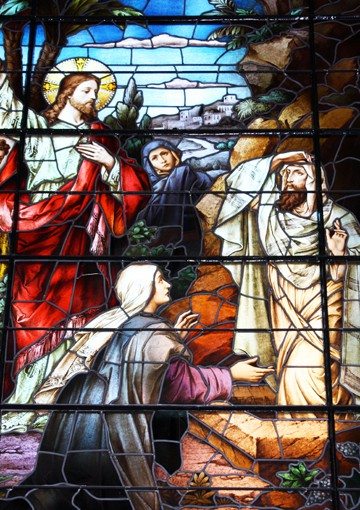







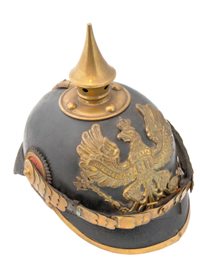
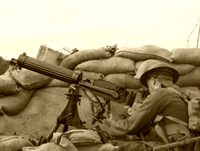

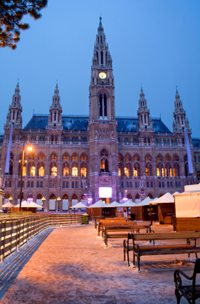


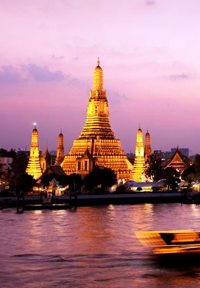

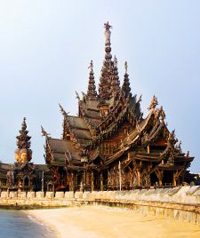



 How Derived:
How Derived: 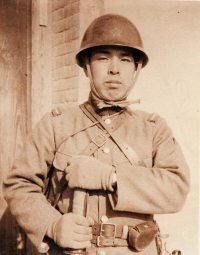 Reincarnation & Planning Lifetimes: Daw has an Announcing Dream involving the Japanese Soldier as a Spirit Being
Reincarnation & Planning Lifetimes: Daw has an Announcing Dream involving the Japanese Soldier as a Spirit Being A Child’s Past Life Memories: Ma says She misses Japan and her Family
A Child’s Past Life Memories: Ma says She misses Japan and her Family The US War Plane that Killed Ma in a Past Lifetime was a P-38 Lightning
The US War Plane that Killed Ma in a Past Lifetime was a P-38 Lightning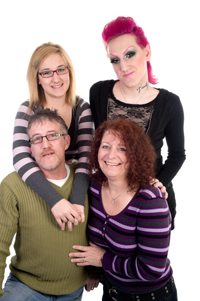 Other reincarnation cases which demonstrate gender identity issues due to change of sex include:
Other reincarnation cases which demonstrate gender identity issues due to change of sex include: